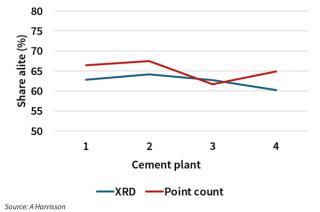
Finding flexibility with AI
In today’s rapidly-evolving industrial landscape, optimising production schedules is no longer si...

Subscribe to get access to all News, Articles and Video sections of the CemNet.com website.
SubscribeOur editors pick the top news delivered to your inbox each day.

In today’s rapidly-evolving industrial landscape, optimising production schedules is no longer si...
Two centuries on from Joseph Aspdin's creation of Portland cement, cement producers need to embra...
The operational challenges posed by climate change and energy shortages in cement production have...
At the Pennsuco plant in Medley, Florida, advanced AI-driven insights are reshaping cement produc...